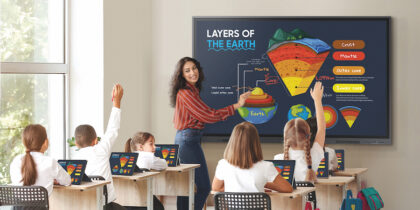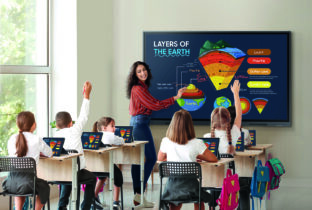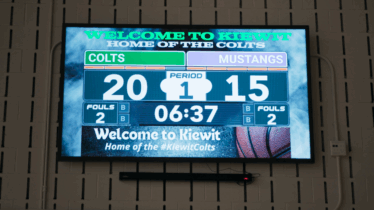For generations, a traditional one size-fits-all instructional model has reigned paramount in our nation’s classrooms. In this traditional model, students are forced to conform to an individual teaching style, and teachers often get caught teaching to the middle; a speed too fast for those that are struggling, and too slow for those who have already mastered the content.
To this day, despite the incredible technology tools at our fingertips, the instructional practice of using a simple question and answer technique remains prevalent. After sharing information, the teacher will pose a question to gauge student understanding and wait for hands to go up. Often without allowing sufficient time for students to process, the teacher simply calls on a single student for the answer. In a typical classroom of 25 students, calling on one student gives the instructor exactly four percent of what the class is thinking at that point in time. Yet, instructionally, a correct response often signals to a teacher it’s time to move on.
A number of years ago, clickers were introduced to help overcome such a disparity. Teachers could hand each student a clicker and ask questions, soliciting real-time feedback from all students to make instructional decisions on the fly. This sought to create an environment of “every child, every answer, every time.” Although a seemingly utopian concept, assessing student understanding, making real-time, data-driven instructional decisions , and giving a voice to all students with every question became feasible. Unfortunately, there were significant limitations with these tools. The third-party software was often clunky, most times the data couldn’t be integrated into other systems and, as often the case, teachers were forced to use multiple systems – a difficult, time-consuming task.
https://www.youtube.com/watch?v=sMXirSBDQ3o
Today, new one-to-one computing solutions are overcoming these challenges and allowing the shift to a more personalized learning model. This educational technology encourages student participation and collaboration, promotes 21st century skills and deeper learning, while simultaneously making the teachers more effective by providing data to make instructional decisions.
One solution that stands out is Samsung School. An integrated digital learning platform incorporating tablets and classroom displays, it provides teachers the ability to track student progress, facilitates student-teacher communication, as well as the ability for teachers to elicit student feedback en masse and in real-time to drive instructional decisions. This classroom technology offers educators a seamless, integrated approach to data informed instruction.
Samsung School is allowing schools like the Alternative School for Math and Science (ASMS) in Corning, NY to transform the learning environment, taking a step closer to personalization for every child, every answer, every time.






